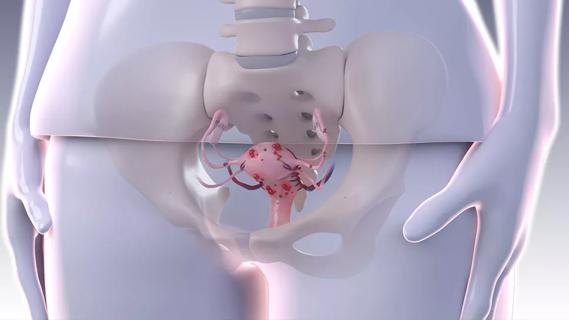Bias threatens to deprive women of an HSDD treatment

Cleveland Clinic is a non-profit academic medical center. Advertising on our site helps support our mission. We do not endorse non-Cleveland Clinic products or services. Policy
One in 10 women in this country suffers from hypoactive sexual desire disorder (HSDD), a condition characterized by a distressing decrease in sexual desire. When your patients have symptoms of HSDD, what do you do?
After excluding medical, psychological and relationship problems and medication side effects, I do not hesitate to prescribe flibanserin (Addyi) 100 mg at night.
It works for a good number of patients: at least 50 percent have a meaningful response. This medication was initially studied as an antidepressant (with similar effects on depression as paroxetine) and found to incidentally improve sexual desire. It is a 5-hydroxytryptophan (1A) receptor agonist and 5-HT (2A) receptor antagonist that restores sexual desire by balancing brain chemistry. It is not an aphrodisiac and must be taken over time to be effective.
In cases when this multichannel serotonergic agent fails to improve sex drive after two or three months, it can be abruptly discontinued without harm. The discontinuation rate of 12-13 percent is in line with that of other drugs affecting the central nervous system (CNS).
Flibanserin’s side effects—dizziness, hypotension and somnolence—are also in line with many CNS antidepressants that we prescribe to women for conditions that include depression, anxiety and premenstrual dysphoric disorder. These risks can be reduced by taking the medicine at night and avoiding alcohol, which can raise flibanserin blood levels.
So why am I providing this information on flibanserin? A recent article and editorial in JAMA Internal Medicine may cause some physicians to think twice about prescribing this drug, which is the only FDA-approved medication for HSDD women. I find fault with both the biased meta-analysis and the biased editorial by an anti-pharma husband and wife couple, who took the FDA to task for approving the medication after its third submission.
I question the JAMA editorial staff as to why the meta-analysis was not more carefully vetted before being accepted for publication, particularly when a 2015 meta-analysis of all randomized, double-blind, placebo-controlled studies of flibanserin showed it to be effective in the treatment of HSDD. In all four trials, flibanserin was superior to placebo in increasing satisfying sexual events, sexual desire score and Female Sexual Function Index. The proportion of women who experienced an adverse event, nervous system disorder or fatigue indicated that flibanserin was well tolerated.
The JAMA article misleadingly concluded that flibanserin only increased sexual events an average of 0.49 per month, therefore, its effects were weak and outweighed by adverse events that included dizziness and somnolence. Their meta-analysis included dosing studies using 25mg and 50mg doses, which were ineffective, along with 100 mg dosing studies.
The JAMA editorial incorrectly stated that flibanserin carries a “black box warning.” Rather, it carries a boxed warning that using the drug with alcohol increases the risk of hypotension and syncope, since it is processed through the cytochrome CYP3A4 pathway, as are antifungal medications taken for vaginal yeast infections. The boxed warning was based on the FDA-required alcohol study in which 23 men and 2 women drank 0.5-1.0 bottle of wine in the morning before breakfast. In other studies of flibanserin in women, approximately 60 percent socially drank ETOH. However, the FDA required the additional alcohol study and now requires physicians to complete an Addyi Risk Evaluation and Mitigation Strategy (REMS) Program in order for physicians to prescribe the drug.
Like any drug, flibanserin must be used wisely. Its use with multiple weak CYP3A4 inhibitors (for example, oral contraceptives, cimetidine, fluoxetine, ginkgo, ranitidine) may increase flibanserin exposure.
Its use with strong CYP2C19 inhibitors (including proton pump inhibitors, selective serotonin reuptake inhibitors, benzodiazepines, antifungals) may increase flibanserin levels.
On the other hand, using flibanserin with CYP3A4 inducers (carbamazepine, phenobarbital, phenytoin, rifabutin and rifampin) will decrease flibanserin levels.
Digoxin levels may be increased if used concomitantly. Watch closely for excessive sedation when used with CNS depressants such as diphenhydramine, opioids, hypnotics and benzodiazepines. Simvastatin levels may be increased by a factor of 1.5.
The bottom line: Flibanserin 100 mg daily at night is an effective therapeutic option for women with HSDD.
Holly L. Thacker, MD is Professor and Director of the Center for Specialized Women’s Health at Cleveland Clinic and Executive Director of Speaking of Women’s Health

Comparing strategies for cesarean prophylaxis with penicillin allergy

Counseling and careful surgical considerations are key

Deprivation is linked to impaired glucose intolerance and racial disparities

Perioperative prophylaxis and class III obesity

Artesunate ointment is safe well and tolerated patients with vulvar intraepithelial neoplasia

Endoscopic balloon dilation during pregnancy helps optimize outcomes

Researchers examine waste and implore colleagues to take action

Mode of delivery does not affect patient satisfaction